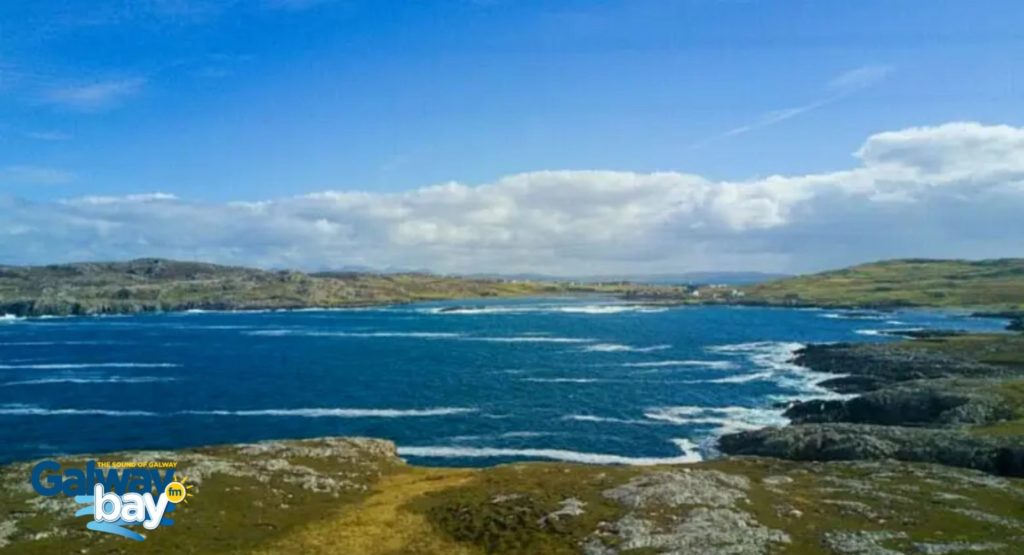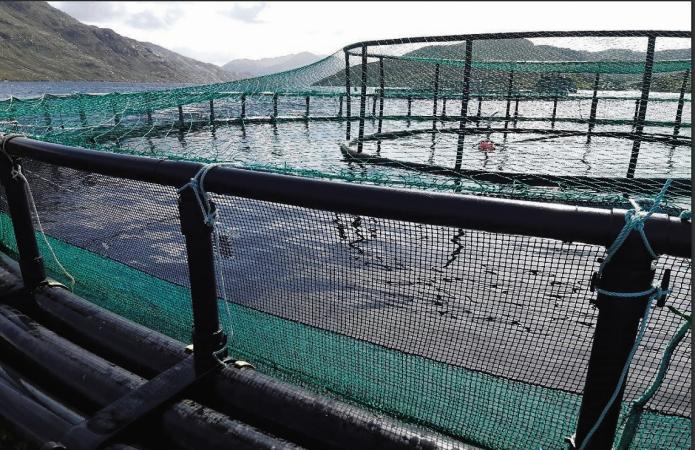Published:
-

-
Author: Dara Bradley
~ 4 minutes read
An unpublished preliminary report into a serious fish farm escape in Conamara has estimated that between 7,000 and 8,000 farmed salmon escaped into wild waters at Killary Harbour.
The findings, contained in a report released this week to the Connacht Tribune under Freedom of Information (FOI) legislation, also confirmed the operators of the farm had been treating its fish stock for amoeba prior to the escape event on Sunday August 11.
This treatment was described as ‘routine’ and involved freshwater baths to prevent amoebic gill disease.
Another scientific report has concluded that there was “very little risk” of a sea lice infestation of wild salmon stocks because of this incident.
The authorities investigating the escape had declined to say how many salmon got out of a damaged cage at Rosroe, Killary Harbour on August 11 and 12.
But according to internal correspondence released to the Tribune under FOI, Mannin Bay Salmon Company, which is licensed to Docon Limited of Mulranny in Mayo, told the Department of Agriculture, Food and the Marine that between 7,000 and 8,000 fish had escaped into the wild.
A preliminary report by the Marine Institute in Oranmore – also released through FOI – put the number of escaped farmed salmon at 7,000.
Galway Bay Against Salmon Cages had feared more than 10,000 salmon had got loose.
The internal communication revealed that Mannin Bay Salmon Company alerted the Department of Marine of an escape at 12.39pm on Tuesday, August 13.
“Our guys on site have reported an escape from one of the cages on the site which we are currently treating with freshwater baths for amoeba,” the company’s email to the Department said.
The company said a hole was found in one cage, about four metres from the surface. It had been repaired but at that stage they did not know how many farmed fish had escaped.
Kevin O’Byrne, an official from the Department of Marine, who visited the farm on Thursday, August 15, was told by the company that an estimated 7,000-8,000 fish had escaped.
Following his inspection, Mr O’Byrne concluded the escape occurred on Sunday, August 11.
He noted the fish were “undergoing routine treatment for amoeba” using a third-party well-boat before the sea conditions deteriorated on Sunday afternoon and operations were suspended.
The operator suggested to Mr O’Byrne that the tear in the net was likely caused by the snagging of a vessel moored alongside the cage during inclement weather.
“No inspection records from the well-boat, diving operations, weather, stocking information, mortalities, CCTV footage etc were made available to me during the site inspection,” Mr O’Byrne said in his report.
He said a member of the Marine Institute had reviewed CCTV footage of the cage and confirmed “the salmon had approximate weights of 1.5-2kgs and were non matured”.
“The operator advised that the incident occurred due to a vessel coming into contact with the net during inclement weather on Sunday causing a tear along the cage net. Following the inspection of the cage net, this seems to be in keeping with the explanation offered by operator for the incident,” he concluded.
In its preliminary report, the Marine Institute said the operator had “maintained low levels of sea lice on this farm for all of 2024” and average levels of sea lice did not exceed “trigger levels”.
“A sea lice inspection carried out on 21 August 2024 on a sample of 30 fish from the affected pen found no sea lice present on these fish, which would indicate there is very little risk related to a sea lice infestation to wild salmonid populations from these escapees,” it said.
It said a disease surveillance inspection of the site on May 17, 2024, did not indicate the presence of any listed diseases, and there was no change in the farm’s health status since then.
“We are aware that freshwater treatments have been carried out at Rosroe, to prevent the development of Amoebic Gill Disease (AGD) in the establishment. Such timely treatment of early infection is good practice which is used to prevent the development of disease, thereby contributing to the overall health and welfare of the fish on the site Killary Harbour,” the Marine institute said.
In its assessment of the impact of the escape on wild populations, its preliminary conclusion said: “The low numbers of recaptured fish to date would suggest that the majority of escapees have either migrated to sea or succumbed to predation.
“For those remaining within Killary Harbour, active removal in rivers through netting and rod fishing will contribute to reducing any potential ecological risk. Though the number of recaptured fish examined to date has been low, the absence of maturity along with evidence of no feeding activity further reduces the potential for these fish to survive and interbreed.”
Pictured: One of the cages at the Killary Harbour salmon farm.
For more, read this week’s Connacht Tribune:
Connacht Tribune Digital Edition App
Download the Connacht Tribune Digital Edition App to access to Galway’s best-selling newspaper. Click HERE to download it for iPhone and iPad from Apple’s App Store, or HERE to get the Android Version from Google Play.
Or purchase the Digital Edition for PC, Mac or Laptop from Pagesuite HERE.
Get the Connacht Tribune Live app
The Connacht Tribune Live app is the home of everything that is happening in Galway City and county. It’s completely FREE and features all the latest news, sport and information on what’s on in your area. Click HERE to download it for iPhone and iPad from Apple’s App Store, or HERE to get the Android Version from Google Play.
More like this:

Councillors briefed on works plan for Aran Islands piers
Connemara councillors have been briefed on the works plan for two Aran Islands piers The work on ...

Dunmore Creche gets national award for 'dedication to young minds'
Dún Beag Creche in Dunmore has been recognised for it's 'dedication to young minds' at the inaugu...

Approximately 100 healthcare workers protest outside UHG
Approximately 100 healthcare workers are protesting outside UHG calling for an end to the HSE's P...

Athenry company recognised through Homegrown at Maxol Programme
An Athenry based company has been recognised by Maxol as one of Ireland's finest indigenous food ...

Two men arrested following 60 weekend Garda patrols in Tuam, Athenry, Loughrea and Ballinasloe
Two men have been arrested on foot of outstanding warrants after a major weekend Garda operation ...

Healthcare workers to protest outside UHG today over HSE's Pay and Numbers Strategy
Healthcare workers will hold a protest outside University Hospital Galway at 1pm this afternoon c...

Rents increase in Galway city by 10%
Rents have risen in Galway city by 10.5 percent in the past year, with the average now €2,189. In...

Tributes to songwriter Johnny Duhan as search resumes for second Silver Strand swimmer still missing
A multi agency search operation is resuming around now, to locate a local woman who went missing ...

Galway graduates win top awards at SURE Conference
Two of the four top prizes in the 2024 Science Undergraduate Research Experience (SURE) Network C...
Sign Up To get Weekly Sports UPDATES




